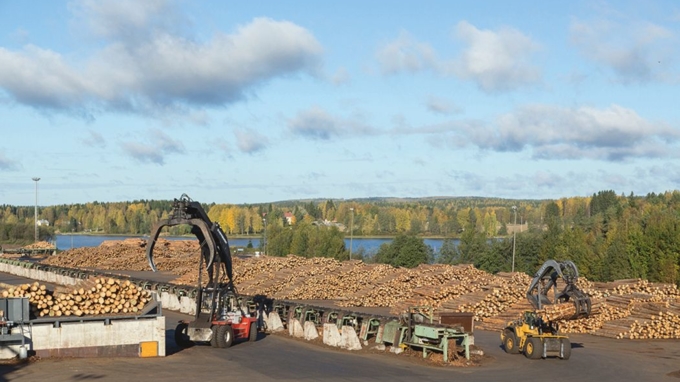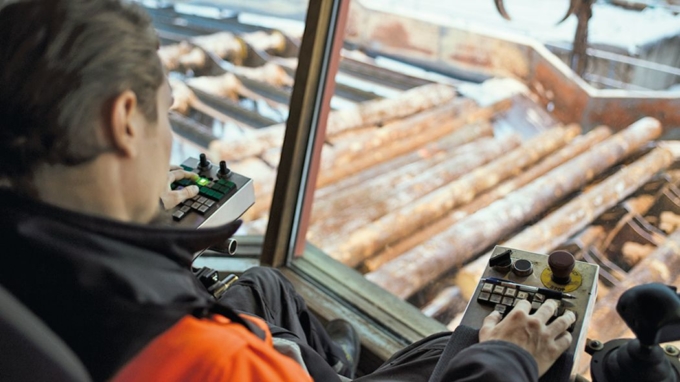Log sorting is the first step in the sawing process. The logs received from the forest are sorted by size and quality with automatic sorting systems into their own log classes. The log class determines the type of lumber that can be sawed from the logs.
Receiving of the logs
Logs arrive normally by lorries to the log sorter, where the whole load can be unloaded to the sorting table or to the unsorted log area. At this point the log batch is measured for both the log supplier and sawmill.
This entity usually consists of mechanical part, measuring system and grading automation.
[arve url=”https://vimeo.com/140633186″]
Video about log sorting starts from the log table, where the logs are placed when arriving at the beginning of the process. These logs are moving on to conveyors for the measuring of size and quality. Along the conveyor there is also a metal detector. Graded logs drop into pockets for each size and/or grade alongside the conveyor. These pockets are emptied by front loaders either to log yard or directly to the sawmill. (Duration 1:40)
Following parameters are measured in the log sorter:
- top and bottom diameter
- lenght
- tapering
- bend
- ovality
- volume
At the same time the operator may do visual quality grading to the logs.
Each log moves on along the conveyor and drops to a pocket destined for that log class.
Number of pockets varies usually between 30 and 80 pockets, but the most recent log sorting lines have had up to 120 pockets. Bigger number of pockets facilitates more accurate log classes.
Especially if the mill takes in also small logs alongside normal sized logs then there is a need to have a larger number of pockets available.
High speed log sorter:
- Logs are received and at the same time measured and graded at high speeds up to 200 meters a minute.
- Capacity of over 15.000 logs per shift.
The ever-increasing capacity increases at the plants equate to stronger and more solid and long-lasting machinery, not forgetting the stricter environmental and ergonomic requirements.



